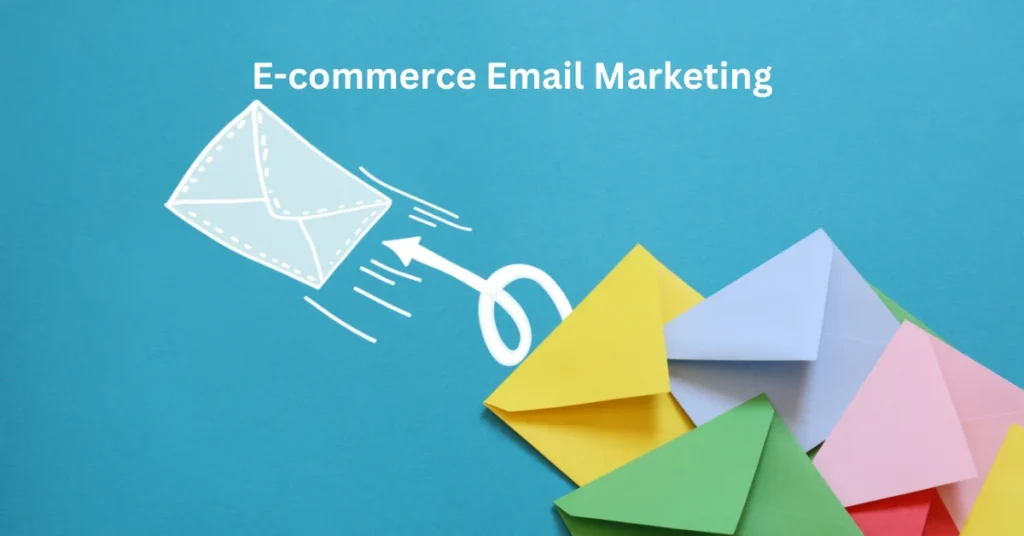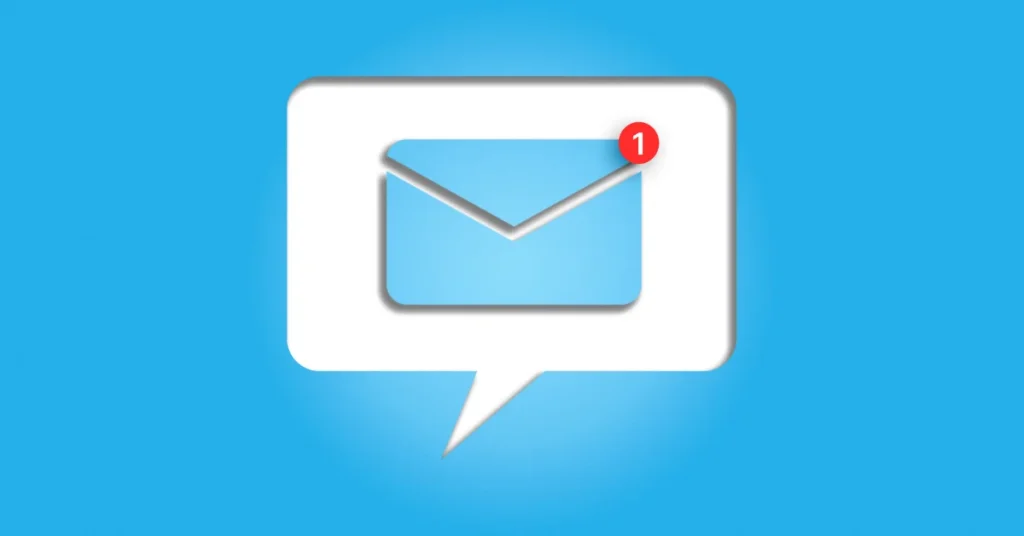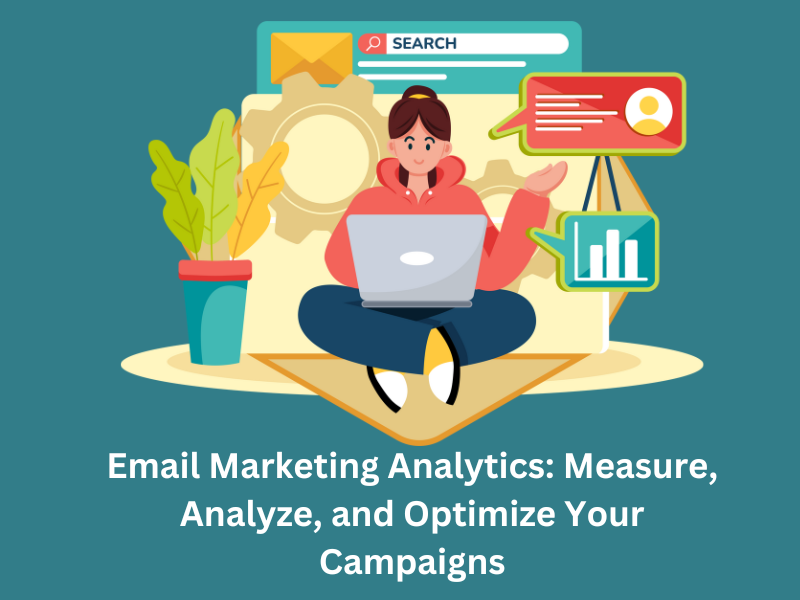Email Marketing Strategies remain one of the most powerful tools for e-commerce businesses looking to drive sales and foster engagement. In a world overflowing with social media updates and digital ads, emails offer a direct line to your customers—a chance to speak to them in their inboxes, where they’re already spending a significant amount of time. Unlike other marketing channels, email allows for a personalized approach that can significantly increase customer loyalty and conversion rates.
Think of email marketing as the digital equivalent of a warm handshake. It’s personal, direct, and, when done right, incredibly effective. With a few strategic moves, an email can turn a casual browser into a loyal customer, making email marketing a must-have component in any e-commerce strategy. From crafting compelling content to leveraging automation, there are numerous ways to optimize your email marketing efforts.
In this blog, we’ll explore various email marketing strategies specifically designed to transform your e-commerce business. Whether you’re just starting out or looking to refine your existing campaigns, these tips will help you engage your audience more effectively and boost your sales.
Understanding the Basics of E-commerce Email Marketing Strategies

Email marketing is more than just sending out promotions or newsletters—it’s about building a relationship with your customers. At its core, email marketing for e-commerce involves using email to promote products or services, engage with customers, and drive sales. It’s an essential part of any digital marketing strategy because it allows you to reach your audience directly, providing a unique opportunity to create personalized experiences that resonate with each recipient.
Key Benefits of Email Marketing for Online Stores
- Cost-Effectiveness: Unlike traditional advertising methods, email marketing offers a high return on investment (ROI). With minimal costs involved in sending emails, even small businesses can afford to launch comprehensive email campaigns without breaking the bank.
- Direct Communication: Email allows you to speak directly to your customers in a space they frequently visit—their inbox. This direct line of communication can be incredibly powerful, especially when you have valuable information to share, such as new product launches, exclusive deals, or personalized recommendations.
- Personalization and Segmentation: One of the greatest advantages of email marketing is the ability to segment your audience and personalize your messages. By dividing your email list into smaller groups based on customer behavior, preferences, or purchase history, you can tailor your content to meet the specific needs of each segment. This not only increases engagement but also boosts the likelihood of conversions.
- Measurable Results: With email marketing, you can easily track and measure the performance of your campaigns. Key metrics such as open rates, click-through rates, and conversion rates provide valuable insights into what’s working and what isn’t, allowing you to continuously optimize your strategy for better results.
Email marketing is not just a one-size-fits-all approach; it’s a dynamic and adaptable tool that can help you achieve a variety of business goals, from driving traffic to your website to nurturing long-term customer relationships.
Building a Strong Email List
A robust email list is the foundation of any successful e-commerce email marketing strategy. Without a well-targeted audience, even the most brilliantly crafted emails will fall flat. Building a strong email list isn’t just about the number of subscribers—it’s about the quality of those subscribers and their potential interest in your products. A high-quality email list can significantly boost engagement and drive sales.

Strategies for Growing a High-Quality Email List
- Utilizing Sign-Up Forms and Pop-Ups: One of the most straightforward ways to grow your email list is by placing sign-up forms prominently on your website. These forms should be easy to find and simple to fill out. Consider using pop-ups or slide-ins that appear when visitors spend a certain amount of time on your site or are about to exit. These attention-grabbing methods can effectively capture the interest of potential subscribers.
- Offering Incentives for New Subscribers: Incentives are a powerful way to encourage visitors to join your email list. Offer a discount code, free shipping, or a small gift in exchange for signing up. These types of rewards not only increase sign-up rates but also give new subscribers a reason to make a purchase. Be sure to clearly communicate the value of subscribing, whether it’s exclusive deals, first access to new products, or helpful content.
- Leveraging Social Media and Website Traffic: Your social media channels and website traffic are invaluable resources for growing your email list. Encourage your social media followers to subscribe by highlighting the benefits they’ll receive. Use your website to drive sign-ups by including email opt-in forms on key pages, such as your homepage, blog posts, and checkout page.
- Segmenting Your Email List for Targeted Marketing: Once you start building your email list, it’s crucial to segment it based on various criteria, such as customer behavior, purchase history, or engagement levels. Segmentation allows you to send targeted emails that are more likely to resonate with each group, increasing open rates, click-through rates, and conversions. A segmented list ensures that your subscribers receive content that’s relevant to them, enhancing their overall experience with your brand.
Building a strong email list is an ongoing process. Continually analyze your methods for collecting emails and test new strategies to find what works best for your audience. Remember, a quality email list is a powerful asset for your e-commerce business.
Crafting Engaging and Effective Email Content
Creating engaging email content is crucial for capturing your audience’s attention and encouraging them to take action. It’s not just about what you say but how you say it. The right email content can lead to higher open rates, click-through rates, and ultimately, more sales. In e-commerce, where competition is fierce, standing out in your subscribers’ inboxes with compelling content is key to driving success.

Tips for Writing Compelling Subject Lines
Your subject line is the first thing a subscriber sees, and it significantly influences whether they open your email. A great subject line is clear, concise, and compelling. Here are some tips to craft effective subject lines:
- Keep it Short and Sweet: Aim for subject lines that are no more than 50 characters. Shorter subject lines are easier to read on mobile devices and are more likely to capture attention quickly.
- Create a Sense of Urgency or Curiosity: Phrases like “limited time offer,” “only a few left,” or “don’t miss out” can create a sense of urgency that encourages immediate action. On the other hand, posing a question or hinting at exclusive content can spark curiosity.
- Use Personalization: Including the subscriber’s name or referencing a past purchase can make the email feel more personalized, increasing the likelihood of it being opened.
Creating Content That Adds Value
Once you’ve gotten your subscriber to open your email, the content needs to deliver on the promise of the subject line. Here’s how to create content that resonates with your audience:
- Informative and Relevant: Your emails should offer value, whether it’s through informative content, special promotions, or helpful tips. Make sure the content is relevant to the subscriber’s interests and purchase history.
- Engaging Visuals: Visual content can enhance your emails and make them more engaging. Use high-quality images, GIFs, or videos to grab attention and communicate your message more effectively. Ensure that your visuals align with your brand’s aesthetic and that they’re optimized for mobile viewing.
- Mobile Optimization: A significant portion of your subscribers will read your emails on their mobile devices. Make sure your emails are mobile-friendly by using responsive design, large fonts, and clear, tappable buttons.
Incorporating Strong Calls to Action (CTAs)
Every email should have a clear and compelling call to action that guides the subscriber towards the desired action, whether it’s making a purchase, visiting your website, or sharing your content. Here’s how to craft effective CTAs:
- Be Clear and Direct: Use concise language that clearly states what action the reader should take. Phrases like “Shop Now,” “Get Your Discount,” or “Learn More” are straightforward and effective.
- Create a Sense of Urgency: Encouraging immediate action with phrases like “Act Now” or “Limited Time Only” can increase the likelihood of a click.
- Visually Distinct: Make your CTA buttons stand out by using contrasting colors and ample white space around them. This makes them easy to find and click on, especially on mobile devices.
By focusing on creating engaging and effective email content, you can significantly enhance your email marketing efforts and drive more sales and engagement for your e-commerce business.
Types of E-commerce Email Campaigns
A successful e-commerce email marketing strategy involves more than just sending a generic newsletter. To truly engage your audience and drive sales, it’s important to diversify your email campaigns based on the needs and behaviors of your subscribers. Different types of emails serve different purposes, from welcoming new subscribers to encouraging repeat purchases. Let’s explore the most effective types of e-commerce email campaigns you can implement.

1. Welcome Emails
Purpose: To make a strong first impression and introduce new subscribers to your brand.
Strategy: The welcome email is your first opportunity to connect with a new subscriber, so it’s crucial to make it count. This email should be warm, inviting, and provide an overview of what subscribers can expect from being on your list. Include a special offer or discount as a thank you for joining. Highlight key products, bestsellers, or top categories to help new subscribers start exploring your store.
2. Promotional Emails
Purpose: To drive immediate sales by promoting special offers, discounts, or new arrivals.
Strategy: Promotional emails are designed to boost sales by creating a sense of urgency. Use clear, compelling language and vibrant visuals to showcase your offers. Limited-time discounts, flash sales, and exclusive subscriber deals can motivate subscribers to make a purchase. Make sure to emphasize the value and benefits of the promotion to encourage conversions.
3. Abandoned Cart Reminders
Purpose: To recover potentially lost sales by reminding customers of the items they left in their cart.
Strategy: Abandoned cart emails are highly effective for encouraging customers to complete their purchases. These emails should be sent shortly after the cart is abandoned and can include a series of reminders over a few days. Include a clear call to action to return to their cart and consider adding a small incentive, like a discount or free shipping, to entice them to finalize their purchase.
4. Product Recommendations and Cross-Selling Emails
Purpose: To increase average order value and drive repeat purchases by suggesting relevant products.
Strategy: Use data from previous purchases or browsing behavior to recommend products that are relevant to each subscriber. These personalized emails can include “Customers also bought” suggestions or highlight complementary products that pair well with items the customer has already purchased. Cross-selling emails are a great way to introduce customers to more of your product range and encourage additional sales.
5. Customer Feedback and Review Requests
Purpose: To gather valuable feedback and build social proof by encouraging customers to leave reviews.
Strategy: After a customer makes a purchase, send an email asking for their feedback. This email can be automated to go out a few days after delivery, allowing time for the customer to experience the product. Encourage honest reviews by making the process simple and offering incentives, like a discount on their next purchase. Positive reviews build trust and can significantly impact future sales.
6. Re-engagement Campaigns for Inactive Customers
Purpose: To win back customers who haven’t engaged with your brand in a while.
Strategy: Re-engagement emails target subscribers who haven’t opened or clicked on your emails in a certain period. Use this opportunity to remind them of what they’re missing out on and provide a special offer or incentive to entice them back. Personalized messages and exclusive deals can make these emails more effective in rekindling interest.
By diversifying your email campaigns and tailoring them to the specific needs and behaviors of your subscribers, you can enhance your engagement rates, drive more sales, and build stronger customer relationships.
Personalization and Automation in Email Marketing

Personalization and automation are two powerful tools that can significantly enhance the effectiveness of your email marketing campaigns. By delivering highly relevant content to your subscribers based on their behaviors, preferences, and purchase history, you can increase engagement and conversions. Automation, on the other hand, allows you to maintain a consistent communication flow with minimal effort, ensuring that your emails reach the right people at the right time.
Benefits of Personalizing Emails
- Enhanced Customer Experience: Personalization helps create a more tailored experience for your subscribers. When customers receive emails that align with their interests and shopping behaviors, they are more likely to engage with your brand. Personalized emails show that you understand your customers’ needs, which can lead to higher satisfaction and loyalty.
- Increased Open and Click-Through Rates: Emails that feel personal and relevant are more likely to be opened and clicked. Simple touches like including the subscriber’s name in the subject line or content can make a big difference. Even better, when the content of the email is specifically tailored to their past behavior—such as recommending products similar to what they’ve previously purchased—the chances of engagement increase significantly.
- Higher Conversion Rates: By sending targeted emails that cater to the unique preferences and needs of each subscriber, you can boost your conversion rates. Personalized product recommendations, for instance, can directly influence purchase decisions by showcasing items the subscriber is more likely to be interested in.
Introduction to Email Automation
Email automation allows you to set up a series of emails that are triggered by specific actions or events, such as signing up for your newsletter, making a purchase, or abandoning a cart. Automated emails save you time and ensure consistent communication with your customers without requiring manual intervention.
Benefits of Email Automation:
- Consistency: Automated emails ensure that your brand stays top of mind with customers by delivering consistent, timely messages.
- Efficiency: Automation reduces the need for manual email sends, freeing up your time to focus on other aspects of your business.
- Scalability: As your business grows, email automation makes it easy to scale your email marketing efforts without a significant increase in workload.
Examples of Automated Email Workflows
- Welcome Series: Automatically send a series of welcome emails to new subscribers to introduce them to your brand and guide them through their first interactions with your store.
- Post-Purchase Follow-Up: After a customer makes a purchase, send an automated email to thank them, offer tips on how to use the product, or suggest complementary items they might like. This not only enhances the customer experience but also opens the door for upselling and cross-selling.
- Birthday or Anniversary Emails: Celebrate your customers’ birthdays or the anniversary of their first purchase with your store by sending a personalized email with a special discount or gift. These thoughtful touches can build strong emotional connections and encourage repeat business.
- Re-Engagement Campaigns: Set up automated emails to win back inactive subscribers. If someone hasn’t opened your emails or made a purchase in a while, send a series of re-engagement emails with a compelling offer to encourage them to come back.
By leveraging personalization and automation in your email marketing strategy, you can create a more engaging and efficient communication process that not only meets but exceeds your customers’ expectations.
Analyzing and Optimizing Email Campaigns

To ensure your email marketing efforts are effective, it’s crucial to regularly analyze and optimize your campaigns. By examining key performance metrics, conducting A/B testing, and making data-driven adjustments, you can continuously improve your email strategies to better engage your audience and drive sales.
Key Metrics to Track for Email Campaign Performance
- Open Rates: This metric measures the percentage of recipients who open your email. A high open rate indicates that your subject lines and sender names are compelling enough to catch your subscribers’ attention. If your open rates are low, consider experimenting with different subject lines, personalization tactics, or send times.
- Click-Through Rates (CTR): The click-through rate shows the percentage of subscribers who clicked on a link within your email. A strong CTR suggests that your email content is engaging and your call to action is persuasive. If your CTR is lower than expected, you might need to optimize your email design, adjust the placement of your links or buttons, or improve the relevancy of your content.
- Conversion Rates: This metric tracks the percentage of email recipients who complete a desired action, such as making a purchase or filling out a form, after clicking through from your email. High conversion rates indicate that your emails are effectively driving the desired actions. If conversion rates are low, consider refining your landing pages, making your CTAs more compelling, or ensuring that the email content aligns closely with the expectations set in the email.
- Bounce Rates: Bounce rates represent the percentage of emails that could not be delivered to the recipient’s inbox. A high bounce rate can indicate issues with your email list quality, such as outdated or incorrect email addresses. To maintain a healthy list, regularly clean your email list by removing inactive or invalid addresses.
- Unsubscribe Rates: This metric shows the percentage of recipients who opt out of your email list after receiving an email. A high unsubscribe rate may suggest that your content is not meeting subscriber expectations, your emails are being sent too frequently, or your emails are not perceived as valuable. Monitor this metric closely to identify patterns and adjust your strategy accordingly.
Tips for A/B Testing Different Elements of Emails
A/B testing, or split testing, involves sending two variations of an email to a small segment of your audience to determine which version performs better. Here’s how to effectively conduct A/B tests:
- Test One Element at a Time: To understand what impacts performance, test only one variable at a time, such as the subject line, CTA, or email layout. This will help you pinpoint which specific change is driving the difference in results.
- Use a Significant Sample Size: Ensure that your test groups are large enough to produce statistically significant results. If your sample size is too small, the results may not accurately represent your entire audience’s preferences.
- Measure Performance Based on Specific Goals: Align your A/B testing metrics with your campaign goals. If your goal is to increase open rates, focus on testing subject lines. If you’re looking to boost conversions, test different CTAs or email content.
- Analyze and Apply Results: Once you have results from your A/B tests, analyze the data to identify the winning variation. Implement the winning version in your future campaigns and continue testing new elements to optimize performance further.
Continuous Optimization Techniques
Optimization doesn’t stop after one successful campaign. Continuously refining your email marketing strategy based on performance data and testing is key to long-term success. Here are some techniques to keep your campaigns fresh and effective:
- Regularly Update Your Email Templates: Keep your designs and layouts current to maintain subscriber interest. Test different templates to see which ones resonate most with your audience.
- Segment Your Audience Further: As you gather more data, refine your audience segments to deliver even more targeted and relevant content. Consider creating new segments based on recent behaviors or preferences.
- Monitor Industry Trends and Competitors: Stay up-to-date with the latest trends in email marketing and observe what your competitors are doing. Applying new best practices and creative ideas can help keep your email strategy innovative and competitive.
By consistently analyzing and optimizing your email campaigns, you can improve engagement, drive higher conversions, and maximize the ROI of your email marketing efforts.
Conclusion
Email marketing remains one of the most effective tools for e-commerce businesses to engage customers, drive sales, and build lasting relationships. By understanding the basics of email marketing and focusing on building a strong, quality email list, you set a solid foundation for your marketing efforts. Crafting engaging and personalized email content that speaks directly to your audience’s needs and preferences further enhances your chances of success.
Diverse email campaigns—from welcome emails to abandoned cart reminders and re-engagement campaigns—allow you to target your subscribers with relevant content at every stage of their customer journey. Leveraging automation and personalization helps you deliver these messages efficiently and effectively, ensuring that your communication feels timely and tailored.
Continuous analysis and optimization of your email campaigns are essential to maintaining high engagement rates and achieving your business goals. By tracking key metrics, conducting A/B tests, and regularly updating your strategies, you can keep your email marketing efforts fresh, relevant, and aligned with your audience’s expectations.
By implementing these proven email marketing strategies, you can transform your e-commerce business, fostering deeper connections with your customers and driving sustainable growth. Remember, successful email marketing is a journey of constant learning and adaptation—stay curious, be creative, and always focus on delivering value to your subscribers.









